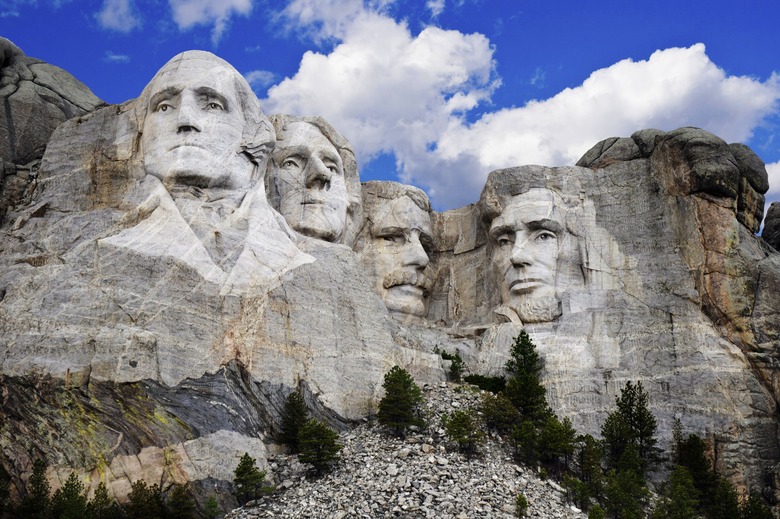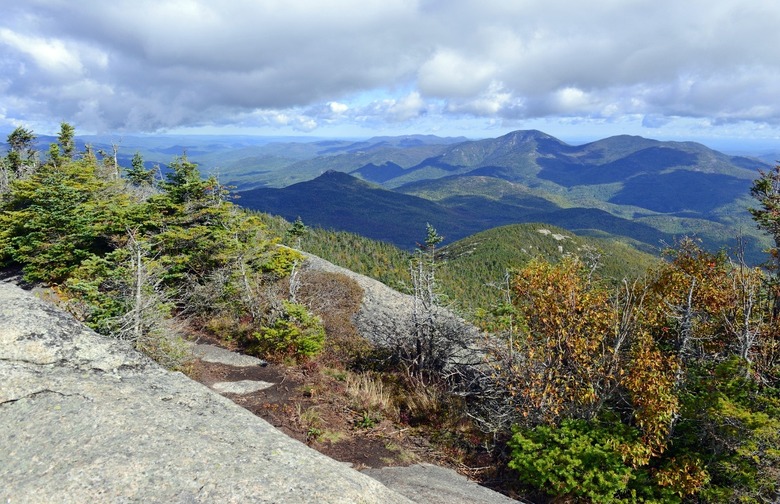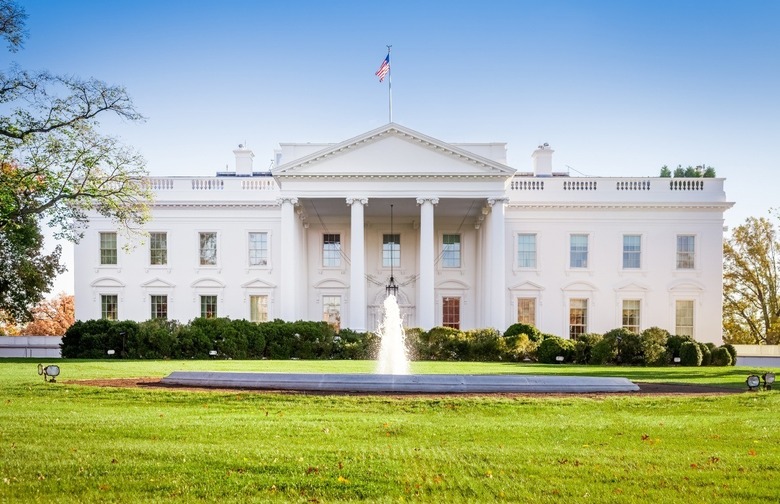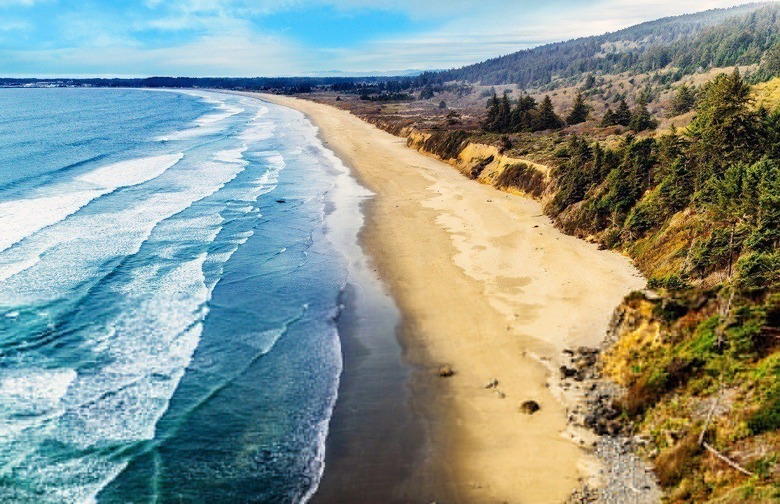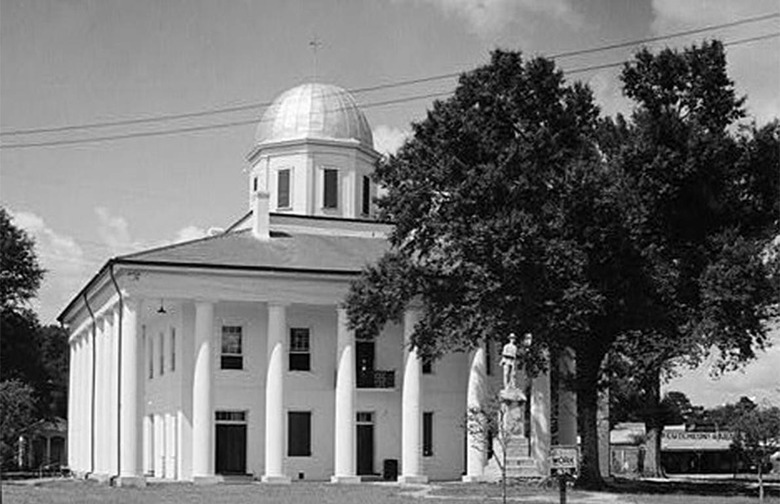Patriotic Road Trips Slideshow
Not only is summer a great time for a road trip — although road trips at any time of the year are exciting — it's a great time to add a patriotic theme to your adventure by incorporating must-visit historical sites into your itinerary. While there are certainly plenty of places you can visit in between destinations, you can't pass through these states listed without stopping at some (if not all) of the patriotic places that have such a distinct connection to our nation's history.
While these road trips are recommended all year long, it is especially appropriate if you are planning a last minute summer vacation. From the East Coast across to the West, choose any area of the country you'd like to explore and hit the road with this list in mind!
Tip: For an epic road trip, you can combine several of these trips together and keep the wheels rolling just a bit longer.
Northeast
Travel through America's historic past by hitting the road through the Northeast and stopping at some of the most famous spots from Washington, D.C., to Boston.
Washington D.C.
No patriotic journey can begin without stopping at our nation's capital first. Beyond the White House (which is an obvious must) stroll down the National Mall to the Lincoln Memorial, on whose steps countless memorable events have taken place — such as the March on Washington for jobs and freedom, Martin Luther King Jr.'s "I Have a Dream" speech, and many inaugural events.
Baltimore, Maryland
From Washington D.C. make a quick stop in Baltimore to check out Fort McHenry. It's a star-shaped fort most famous for defending the Baltimore Harbor from a British Navy attack during the War of 1812. Francis Scott Key was a witness to the event, and it inspired him to write a poem that later became the United States' national anthem. You can't get much more patriotic than "The Star-Spangled Banner."
Philadelphia, Pennsylvania
Pennsylvania is crawling with historic sites that you can't miss on a patriotic road trip. Independence Hall in Philadelphia is where both the Declaration of Independence and Constitution were debated and adopted and is now the centerpiece of the numerous Independence National Historical Park sites. If that isn't enough to get your red blood pumping, the famous Liberty Bell is one of the attractions in the area. If you have some spare time, take a few days to visit Gettysburg, which is most famously known for its battlefield site (now the Gettysburg National Military Park), which played a major role during the Civil War.
Boston, Massachusetts
Boston, Massachusetts, is chock-full of sites that'll keep any history buff busy for quite some time. Check out the 221-foot-tall obelisk monument at Bunker Hill, the site of the first major battle of the American Revolution and the source of the famous quote: "Don't fire until you see the whites of their eyes." Although the ill-prepared colonial forces eventually retreated, they managed to kill or wound almost half of the British soldiers present. In the end, it was a valuable lesson: Just because you lose a battle, doesn't mean you'll lose the war. Your time in Boston would not be completely patriotic if you didn't also visit the Boston Harbor, where in 1773 Bostonians dumped over 92,000 pounds of tea from British ships.
Central
If you're starting in the center of our country make your way west from Abraham Lincoln's home in Illinois to the Oregon Trail ruts in Wyoming.
Springfield, Illinois
Picking the most patriotic destination in Illinois was as easy as flipping a coin. Not in the traditional way, but because if you flip a newer quarter over to the tails side, you'll see an image of the former president and the words "Land of Lincoln." Although Abraham Lincoln grew up in Kentucky and Indiana, his family moved to Illinois when he was 21, and the only house he ever owned was in Springfield, where he lived from 1844 until he was elected president in 1861. After his assassination, Lincoln was buried in Springfield's Oak Ridge Cemetery. His house, along with several other structures within a four-block radius (now owned by the National Park Service), has been restored to its appearance during the time in which Lincoln resided there.
Sioux City, Iowa
On your way west to Mount Rushmore you'll have to cross through Iowa. While passing through, spend a night or two in Sioux City, where you can take a day to see the Sergeant Floyd Monument. Even though Charles Floyd — an explorer who was the only person to die on the Lewis and Clark Expedition — was a native of Kentucky, he gets a lot of love in Iowa, his final resting place. Sioux City is not only home to the Sergeant Floyd museum boat (one of only three surviving steam-powered towboats in the U.S.; free admission), but also the Sergeant Floyd Monument at Floyd's Bluff on the Missouri River. This obelisk and National Historic Landmark was built in 1901 and sits on a 23-acre park with beautiful views of the river valley, and is not too far from Floyd's burial site. It serves as a significant reminder of the extraordinary sacrifices ordinary people made during the dawn of American history.
South Dakota
Mount Rushmore is likely the only tourist destination in South Dakota most people can name. Over two million tourists flock to the site every year to see the enormous stone faces of Presidents Washington, Jefferson, Lincoln, and Teddy Roosevelt, which were carved into the granite formation in the Black Hills beginning in 1925.
Guernsey, Wyoming
Westward expansion might not have been possible without the Oregon Trail, and the Oregon Trail Ruts near Guernsey, Wyoming, are evidence of this. Due to the heavy traffic between 1841 and 1869, this half-mile stretch of land was worn down anywhere from two to six feet into a ridge of solid sandstone. This area is undoubtedly the best preserved set of ruts anywhere along the Oregon Trail, and Wyoming residents feel a strong sense of national pride knowing that their state played such a crucial role in the early history of America. Designated a National Historic Landmark in 1975, the site is a popular tourist destination for history buffs.
West
For a trip on the West Coast, make your way south from Oregon down to Arizona, stopping at historic landmarks in between.
Hammond, Oregon
Hammond, Oregon is home to Fort Stevens State Park — the primary military installation responsible for defending the mouth of the Columbia River during the Civil War. It also came in handy during later conflicts: Fort Stevens was key during the 1896-1903 Alaska Boundary Dispute, when British-American tensions started to rise, and was actually the only military installation in the continental United States to come under enemy fire in World War II when a Japanese submarine fired 17 shells at the fort on the night of June 21, 1942. Now owned by the Oregon Parks and Recreation Department, the park offers both a glimpse into America's history and a fantastic place to hike, bike, and camp. If you have time to soak up more of America's fascinating past, stop by Baker City on your road trip for the National Historic Oregon Trail Interpretive Center where you'll be able to watch reenactments and see the trail ruts.
Richmond, California
From Oregon, enjoy a scenic trip down the coast to Richmond, California, on the San Francisco Bay, for your next patriotic stopping point. The Rosie the Riveter WWII Home Front National Historical Park pays tribute to all the civilians that played their part and helped out where they could during WWII. There's a lot to see here (and it's all free!), but you'll definitely want to check out the extremely informative Visitor Education Center, the Rosie the Riveter Memorial, the cargo ship SS Red Oak Victory. On Fridays you might even get a chance to meet with real home front workers from WWII.
Boulder City, Nevada
From the Bay Area, drive inland to Boulder City, Nevada, to visit the Hoover Dam. When the massive federal government project opened back in 1935, it was both the largest hydroelectric power-producing facility and the largest concrete structure in the world. If you've never been, trust us when we say staring at this unbelievably monumental feat of engineering really fills one with pride. Plus, the dam gets patriotic bonus points for being named after a president — even though Hoover was not invited to (nor was he mentioned at) the dedication ceremony due to his perceived role in the Great Depression.
Sierra Vista, Arizona
Although Fort Huachuca in Arizona was originally built to combat the Chiricahua Apache tribe and secure the border with Mexico, the fort made its patriotic mark in 1913 when the base became home to the "Buffalo Soldiers," the 10th Cavalry Regiment, which was composed entirely of African-Americans. Despite only having been given their freedom a few decades earlier, these brave men still enlisted in the military, willing to fight for the country they called home. The fort also housed 1,251 officers and 24, 427 enlisted soldiers during World War II, and became a US Air Force base during the Korean War. Still an important base, training site, and medical center, Fort Huachuca, which has been a National Historic Landmark since 1976, houses two museums — with a special emphasis on the Buffalo Soldiers — which are open to all visitors (military and civilian) free of charge.
South
The South is no stranger to America's controversial history, and while there are plenty of patriotic stops you can make on this road trip across the South, here are some of the best from Florida to New Mexico.
Cape Canaveral, Florida
While Florida is home to the nation's oldest city, St. Augustine (and you should definitely spend a few days there if you have the chance), the Cape Canaveral Air Force Station is an absolute must on any patriotic road trip. It was built in 1940 and was the famed launch site of the first U.S. Earth satellite (1958), first U.S. astronaut (1961), first U.S. astronaut in orbit (1962), first two-man U.S. spacecraft (1965), first U.S. unmanned lunar landing (1966), and first three-man U.S. spacecraft (1968). It was also the launch site for all of the first spacecraft to (separately) fly past each of the planets in the solar system (1962–1977), the first spacecraft to orbit Mars (1971) and to roam its surface (1996), the first American spacecraft to orbit and land on Venus (1978), the first spacecraft to orbit Saturn (2004), and to orbit Mercury (2011), and the first spacecraft to leave the Solar System, Voyager 1, which launched in 1977 and crossed into interstellar space almost exactly 35 years later in 2012. These should clearly and obviously be enough reasons to visit the station, the nearby Kennedy Space Center, and the Space & Missile Museum — I mean come on, it's not rocket science!
Jackson, Louisiana
Lasting for 48 grueling days in 1863, the Siege of Port Hudson near Jackson, Louisiana was the final engagement in the Union campaign to recapture the Mississippi River during the Civil War. The first attempts to seize the fortress resulted in devastating losses for the North, but Confederate General Franklin Gardner eventually surrendered after learning of the fall of Vicksburg, Mississippi, to the Union. The site now includes a museum about the siege, artillery displays, and numerous informative and commemorative plaques. The site was designated as a National Historic Landmark in 1974, and re-enactments are held each year.
San Antonio, Texas
During the Texas Revolution, Mexican President General Antonio López de Santa Anna launched a 13-day assault on the Alamo Mission between February 23 and March 6, 1836, in what is now San Antonio, killing all of the Texian defenders. The event inspired scores of locals to join the Texian Army for revenge, and the Texians defeated the Mexican Army at the Battle of San Jacinto on April 21 of the same year. Like the victorious soldiers, millions of tourists "remember the Alamo" each year by visiting the scene of the historic battle — making it the most popular site in Texas.
Santa Fe, New Mexico
End your patriotic road trip in Santa Fe, New Mexico to visit the site of the Glorieta Battlefield (a few miles east of the city). Of the roughly 10,500 actions of the Civil War, fewer than four percent were identified by the Civil War Sites Advisory Commission as principal battles, rated according to significance. Along with the engagements at famous places like Gettysburg and Antietam, the relatively small Battle of Glorieta Pass received the highest rating due to its strategic importance. Sections have since became part of Pecos National Historic Park, but these preserved areas still only comprise about 20 percent of the total battlefield, as the remaining 80 percent is now located on private land. For your next summer vacation, consider the top 50 travel destinations of 2018.
More From The Daily Meal:
